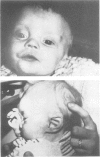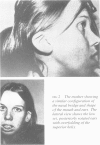Abstract
An interstitial deletion of 16q was identified in an infant with failure to thrive, dysmorphic facies, and congenital heart defects. The mother of this infant had a similar deletion of 16q with ring formation of a fragment presumed to be derived from the deleted portion of 16q. We discuss these cases and compare them to other reports of 16q deletions.
Full text
PDF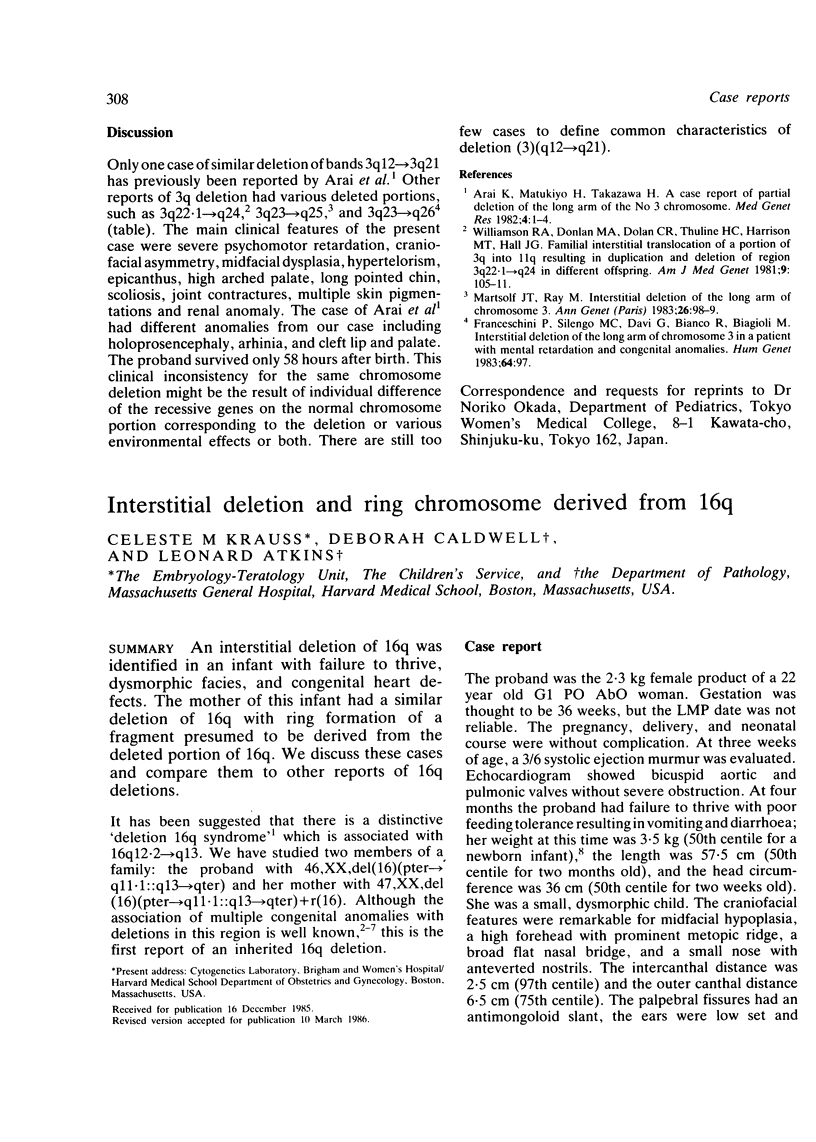
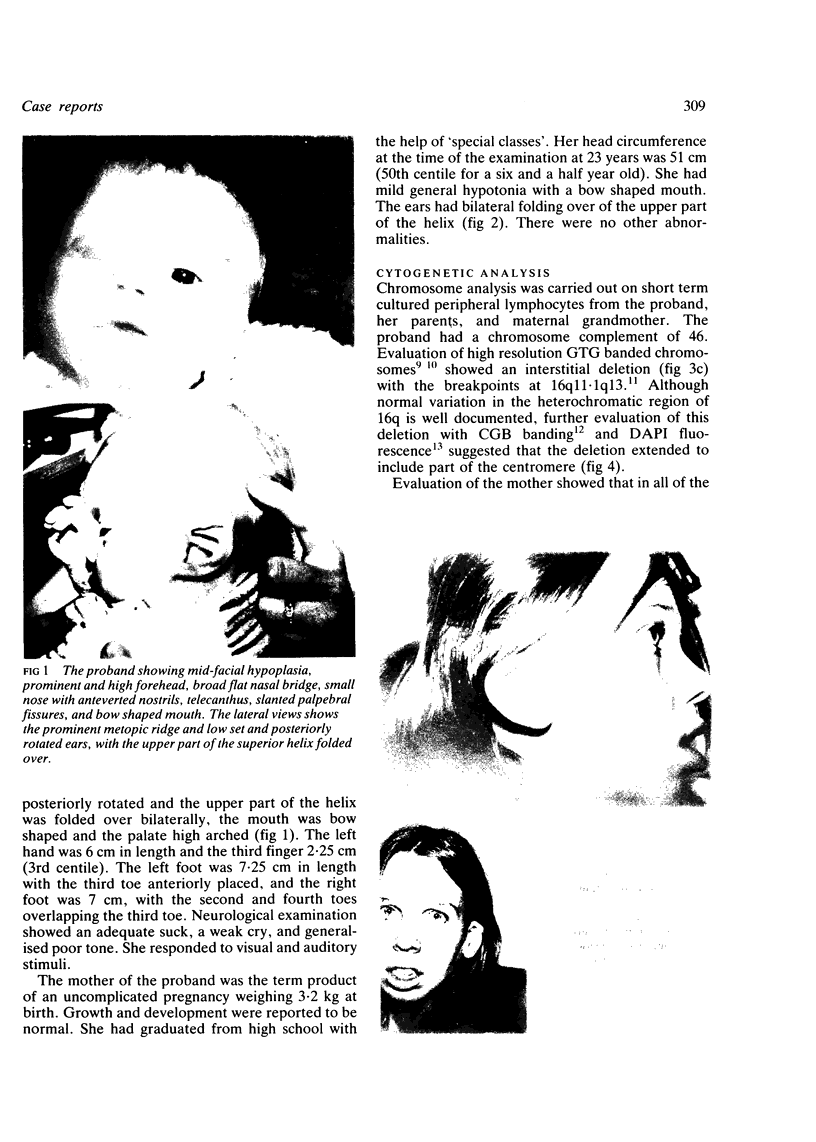
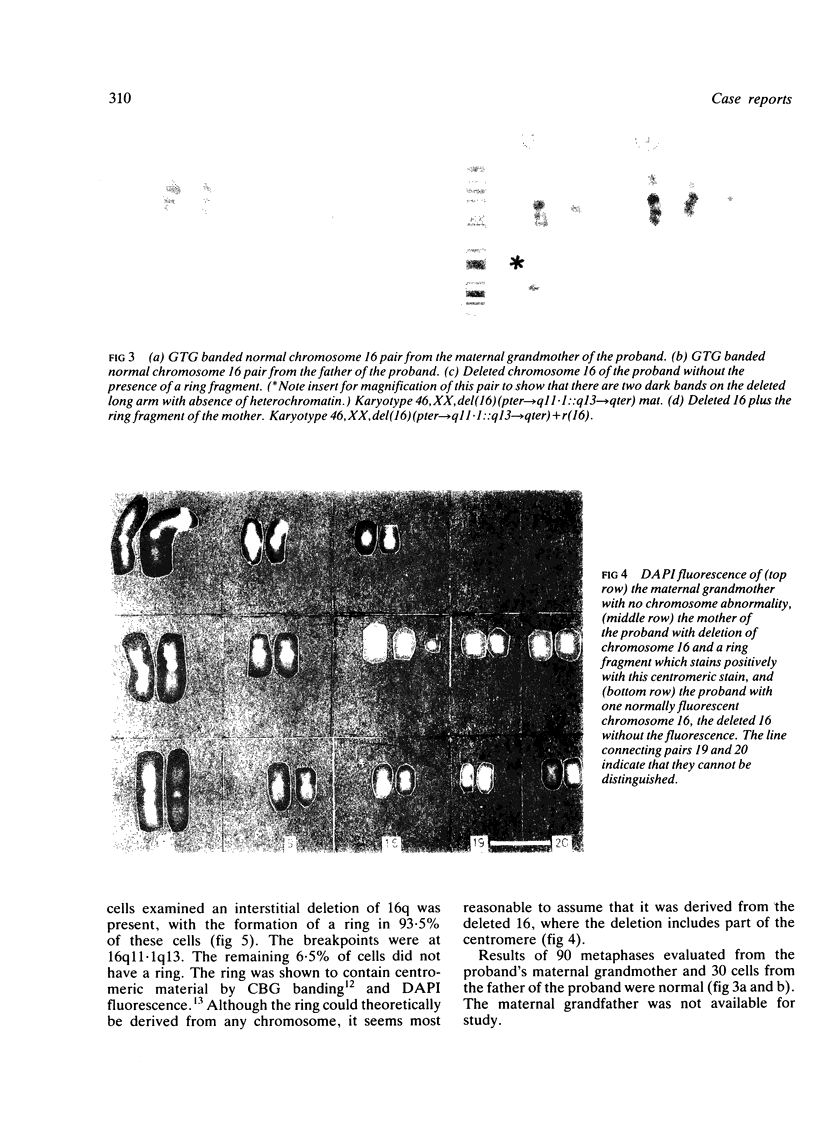
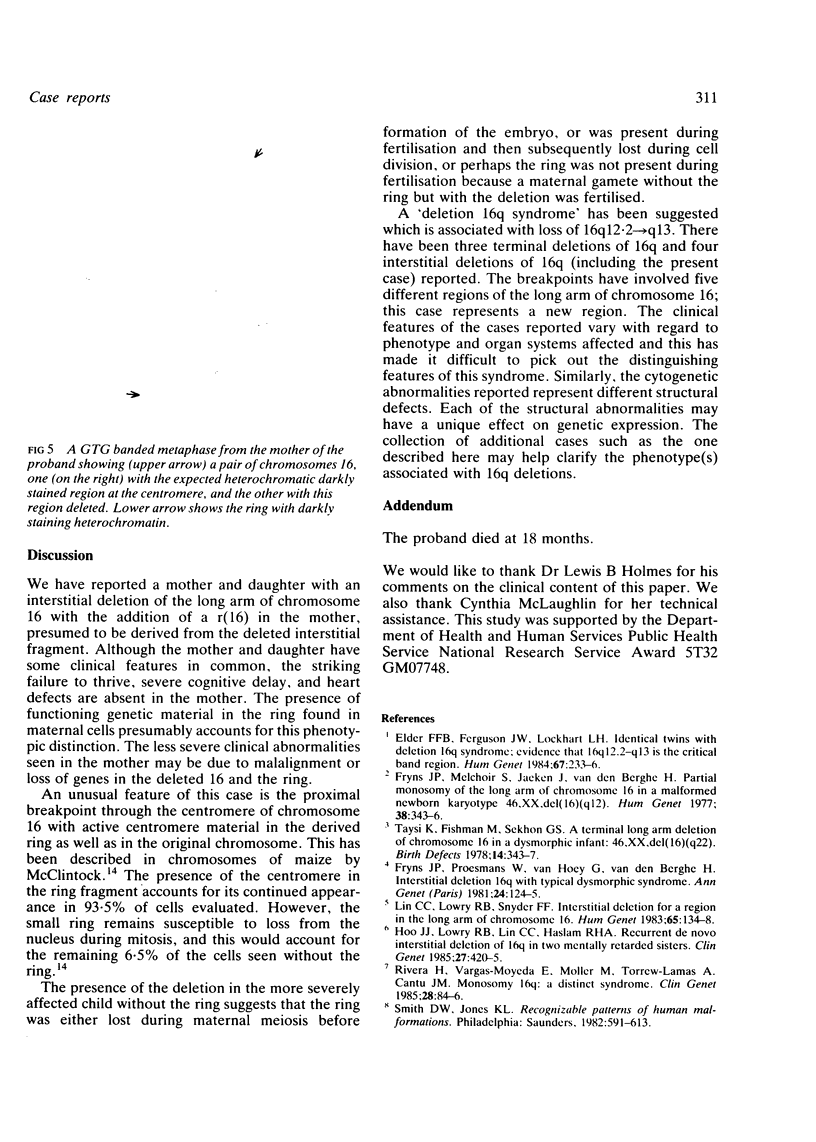

Images in this article
Selected References
These references are in PubMed. This may not be the complete list of references from this article.
- Donlon T. A., Magenis R. E. Methyl green is a substitute for distamycin A in the formation of distamycin A/DAPI C-bands. Hum Genet. 1983;65(2):144–146. doi: 10.1007/BF00286651. [DOI] [PubMed] [Google Scholar]
- Elder F. F., Ferguson J. W., Lockhart L. H. Identical twins with deletion 16q syndrome: evidence that 16q12.2-q13 is the critical band region. Hum Genet. 1984;67(2):233–236. doi: 10.1007/BF00273010. [DOI] [PubMed] [Google Scholar]
- Fryns J. P., Melchoir S., Jaeken J., van den Berghe H. Partial monosomy of the long arm of chromosome 16 in a malformed newborn: karyotype 46,XX,del(16))q21). Hum Genet. 1977 Oct 14;38(3):343–346. doi: 10.1007/BF00402162. [DOI] [PubMed] [Google Scholar]
- Fryns J. P., Proesmans W., Van Hoey G., Van den Berghe H. Interstitial 16q deletion with typical dysmorphic syndrome. Ann Genet. 1981;24(2):124–125. [PubMed] [Google Scholar]
- Hoo J. J., Lowry R. B., Lin C. C., Haslam R. H. Recurrent de novo interstitial deletion of 16q in two mentally retarded sisters. Clin Genet. 1985 Apr;27(4):420–425. doi: 10.1111/j.1399-0004.1985.tb02287.x. [DOI] [PubMed] [Google Scholar]
- Ikeuchi T. Inhibitory effect of ethidium bromide on mitotic chromosome condensation and its application to high-resolution chromosome banding. Cytogenet Cell Genet. 1984;38(1):56–61. doi: 10.1159/000132030. [DOI] [PubMed] [Google Scholar]
- Lin C. C., Lowry R. B., Snyder F. F. Interstitial deletion for a region in the long arm of chromosome 16. Hum Genet. 1983;65(2):134–138. doi: 10.1007/BF00286649. [DOI] [PubMed] [Google Scholar]
- McClintock B. The Production of Homozygous Deficient Tissues with Mutant Characteristics by Means of the Aberrant Mitotic Behavior of Ring-Shaped Chromosomes. Genetics. 1938 Jul;23(4):315–376. doi: 10.1093/genetics/23.4.315. [DOI] [PMC free article] [PubMed] [Google Scholar]
- Rivera H., Vargas-Moyeda E., Möller M., Torres-Lamas A., Cantú J. M. Monosomy 16q: a distinct syndrome. Apropos of a de novo del(16) (q2100q2300). Clin Genet. 1985 Jul;28(1):84–86. doi: 10.1111/j.1399-0004.1985.tb01223.x. [DOI] [PubMed] [Google Scholar]
- Sumner A. T. A simple technique for demonstrating centromeric heterochromatin. Exp Cell Res. 1972 Nov;75(1):304–306. doi: 10.1016/0014-4827(72)90558-7. [DOI] [PubMed] [Google Scholar]
- Taysi K., Fishman M., Sekhon G. S. A terminal long arm deletion of chromosome 16 in a dysmorphic infant: 46,XY,del(16) (q22). Birth Defects Orig Artic Ser. 1978;14(6C):343–347. [PubMed] [Google Scholar]
- Yunis J. J., Sawyer J. R., Ball D. W. The characterization of high-resolution G-banded chromosomes of man. Chromosoma. 1978 Aug 14;67(4):293–307. doi: 10.1007/BF00285963. [DOI] [PubMed] [Google Scholar]



